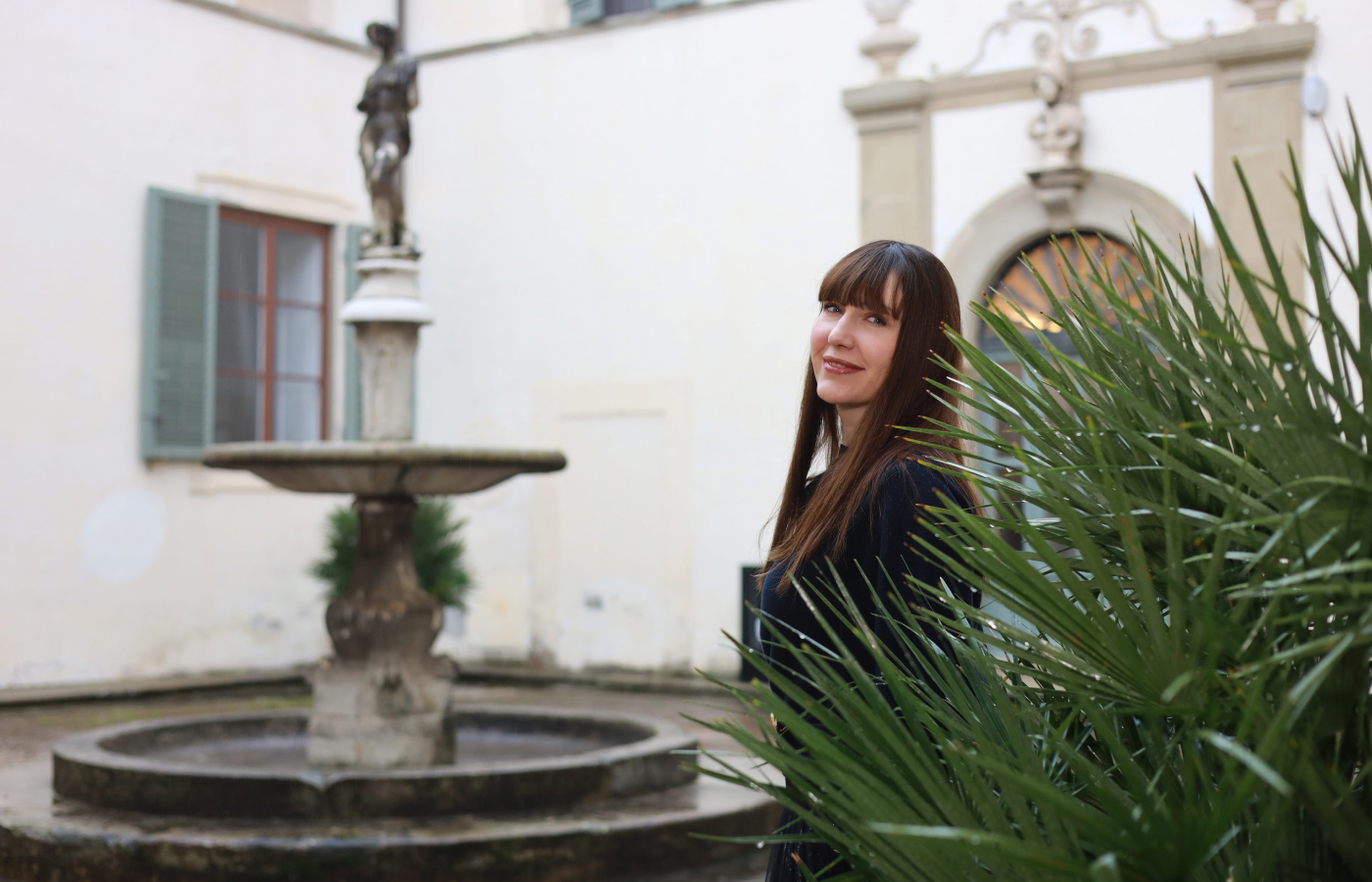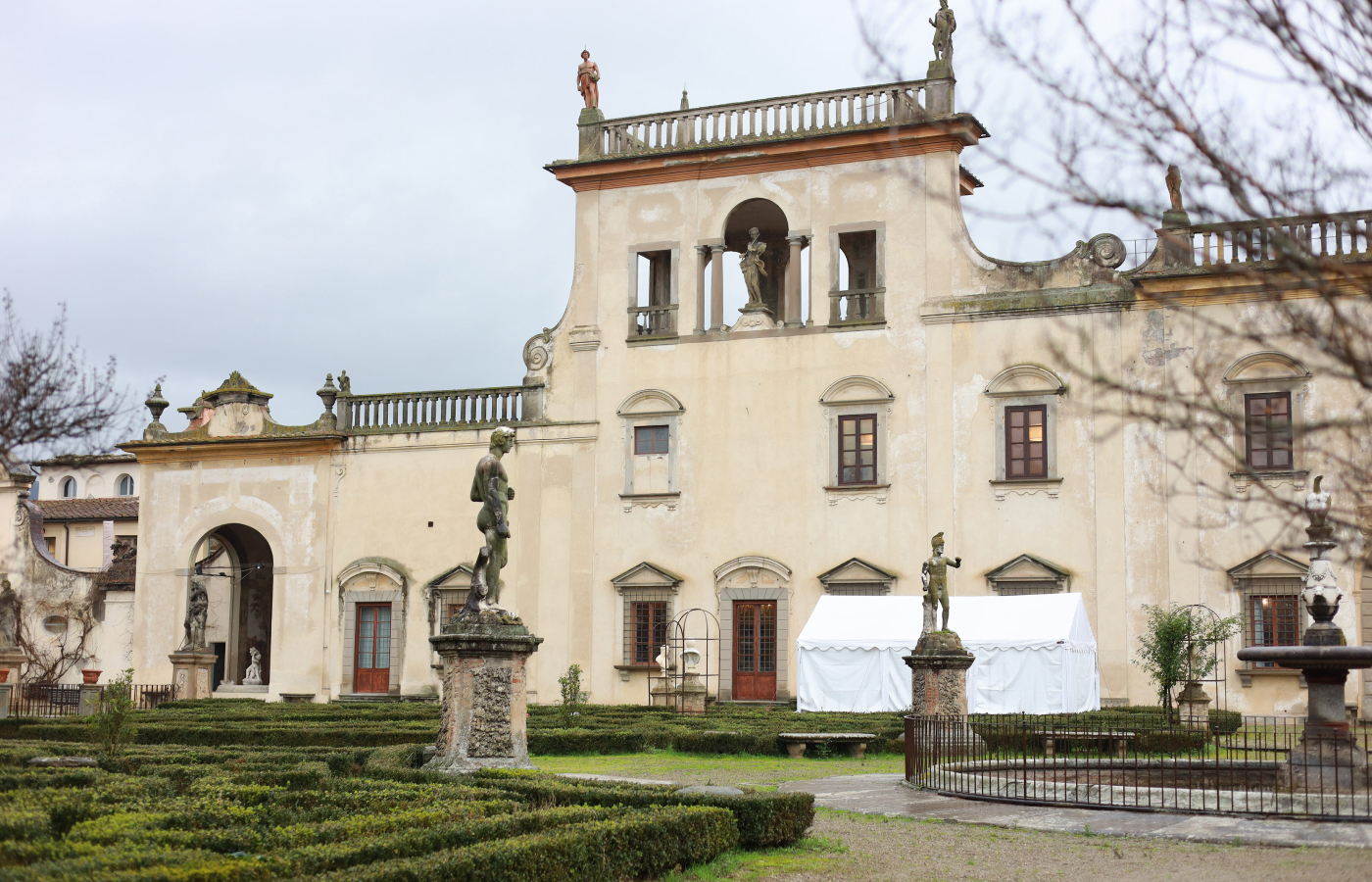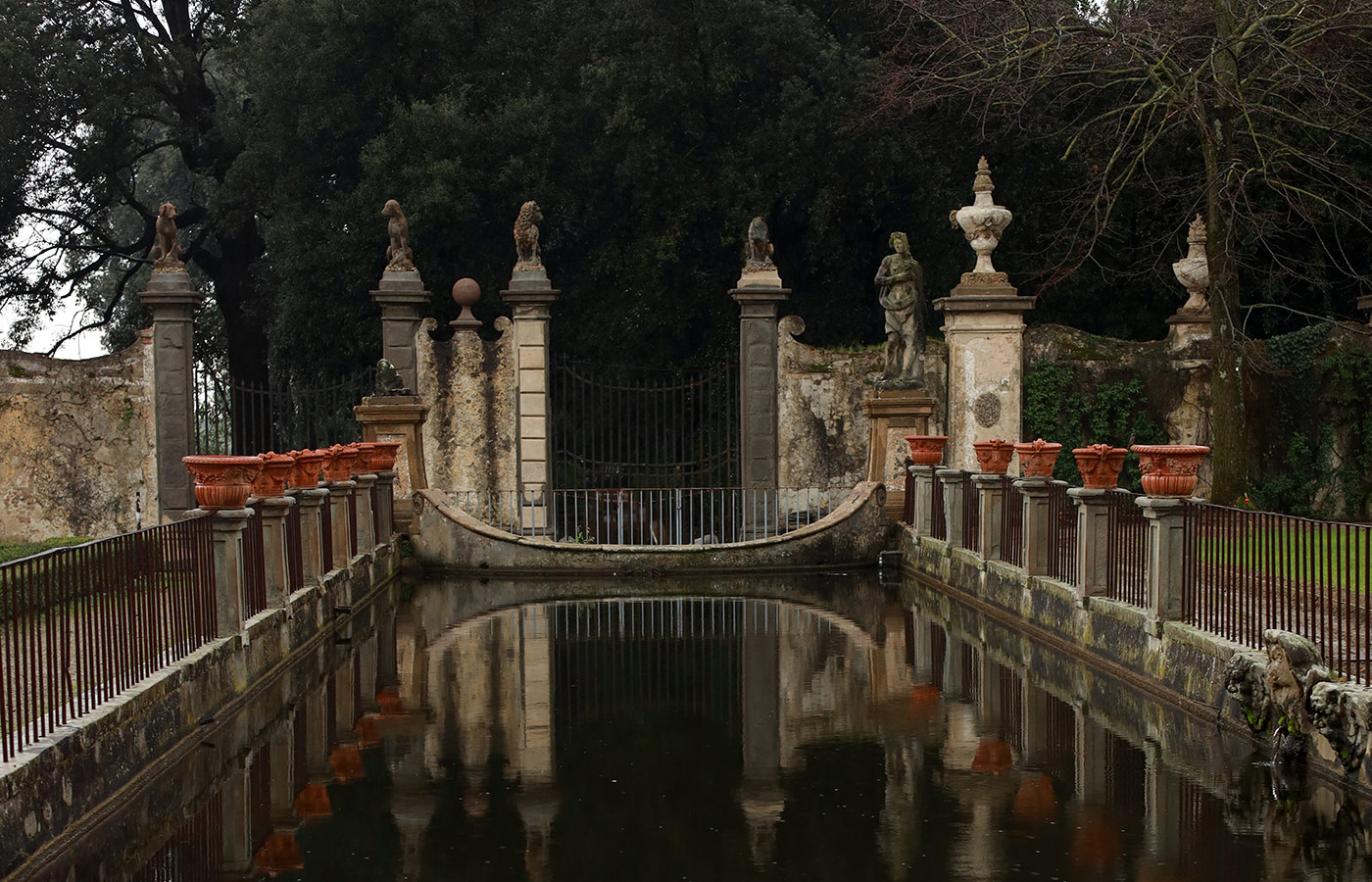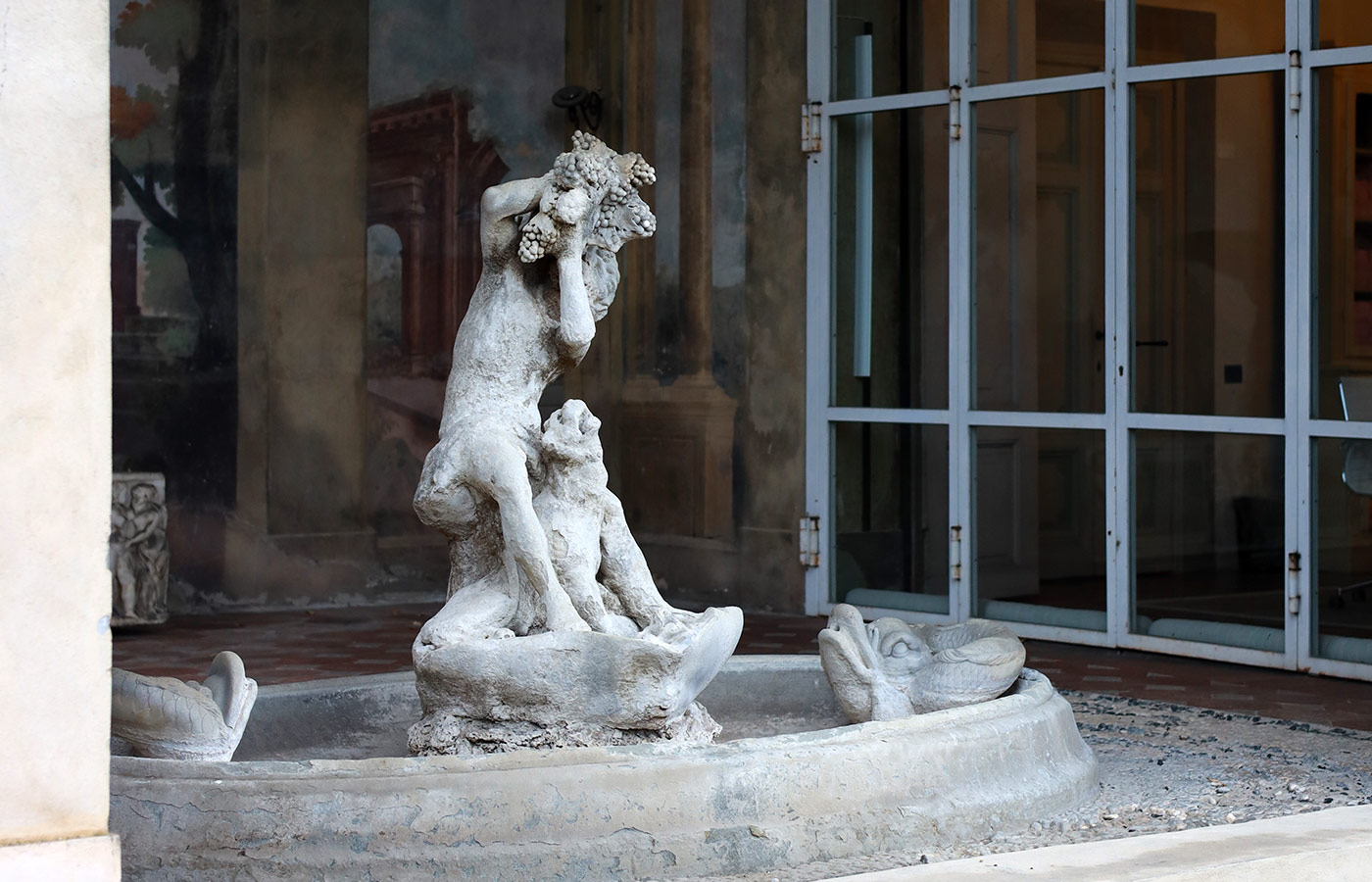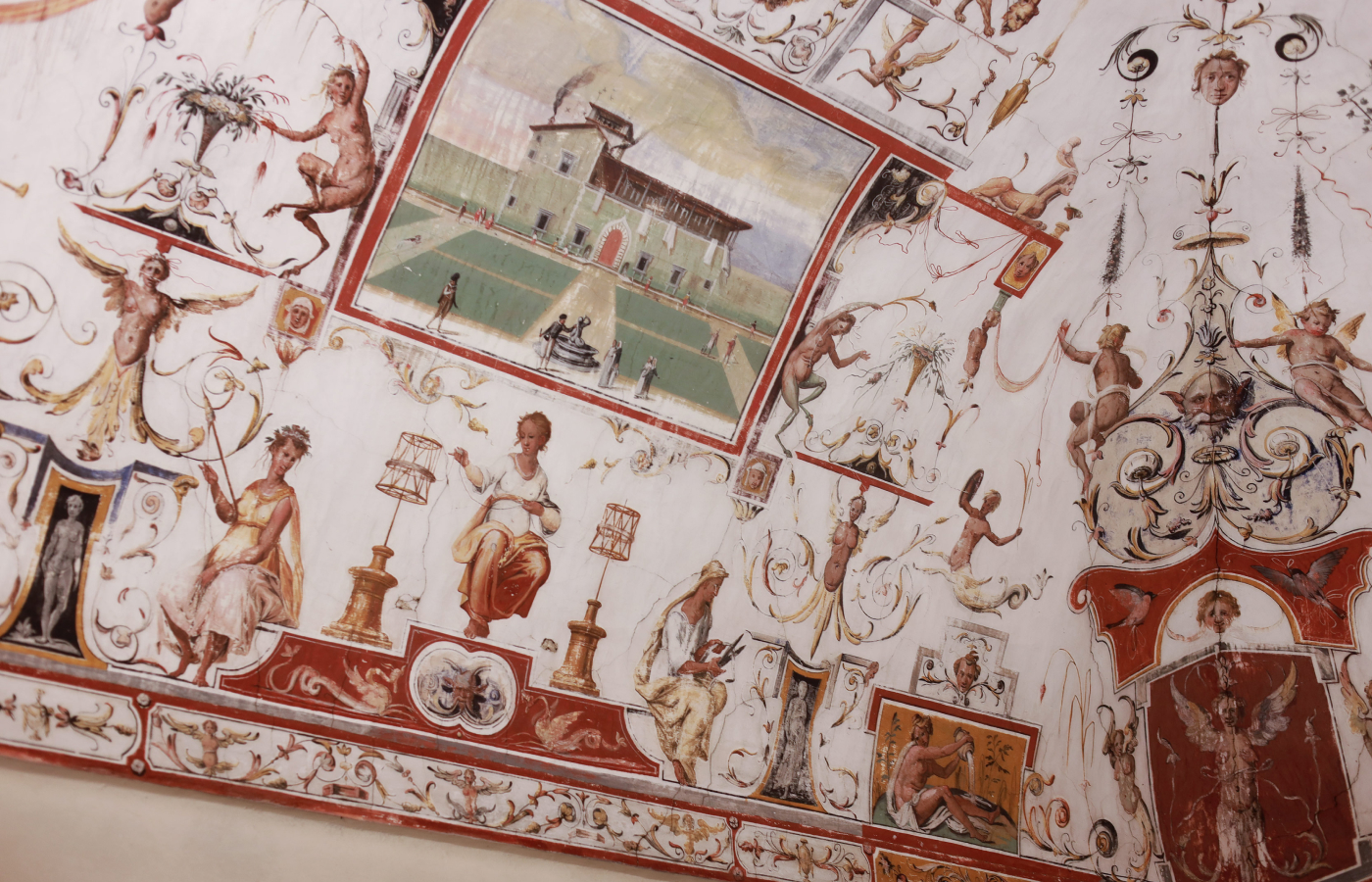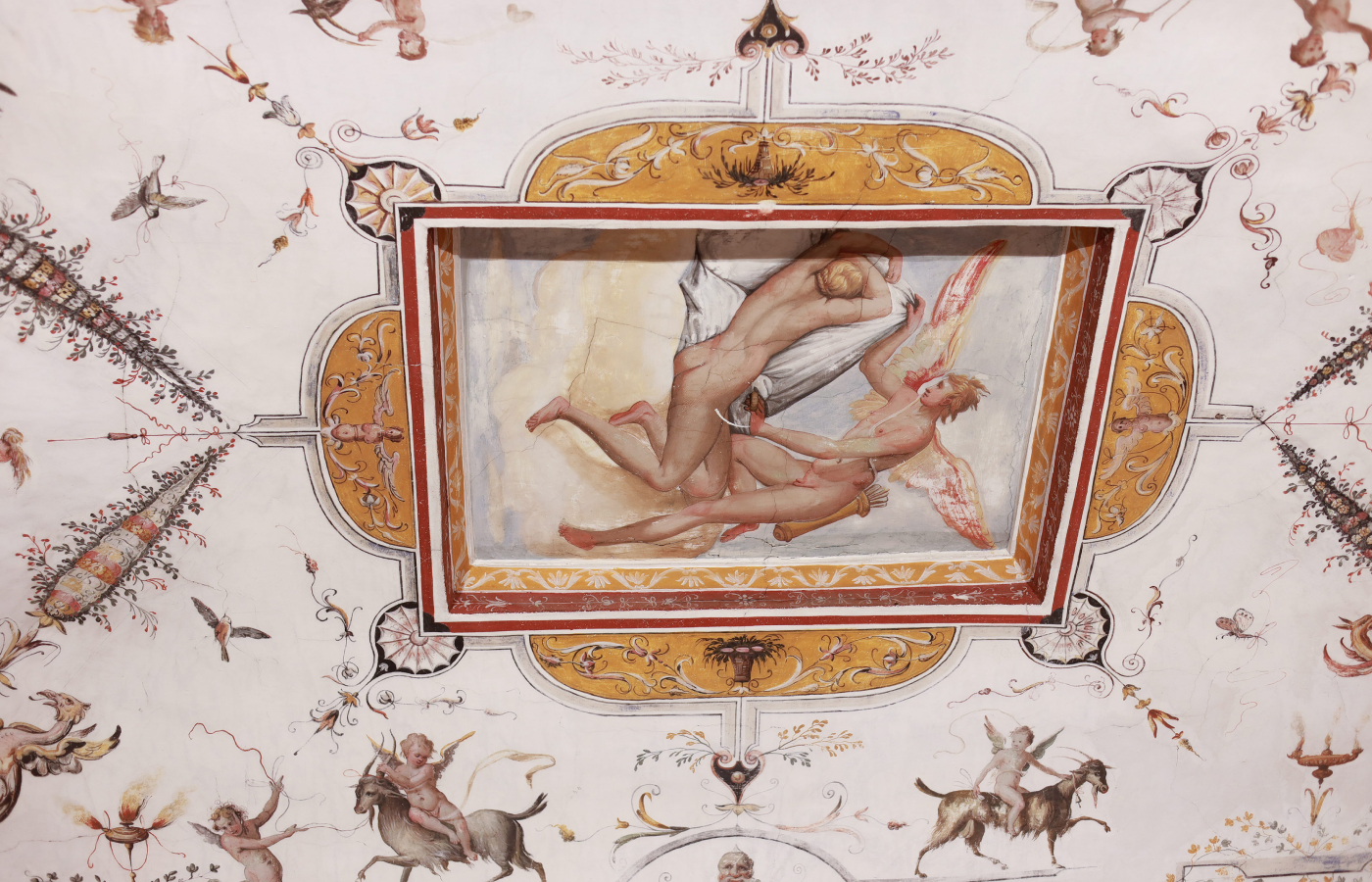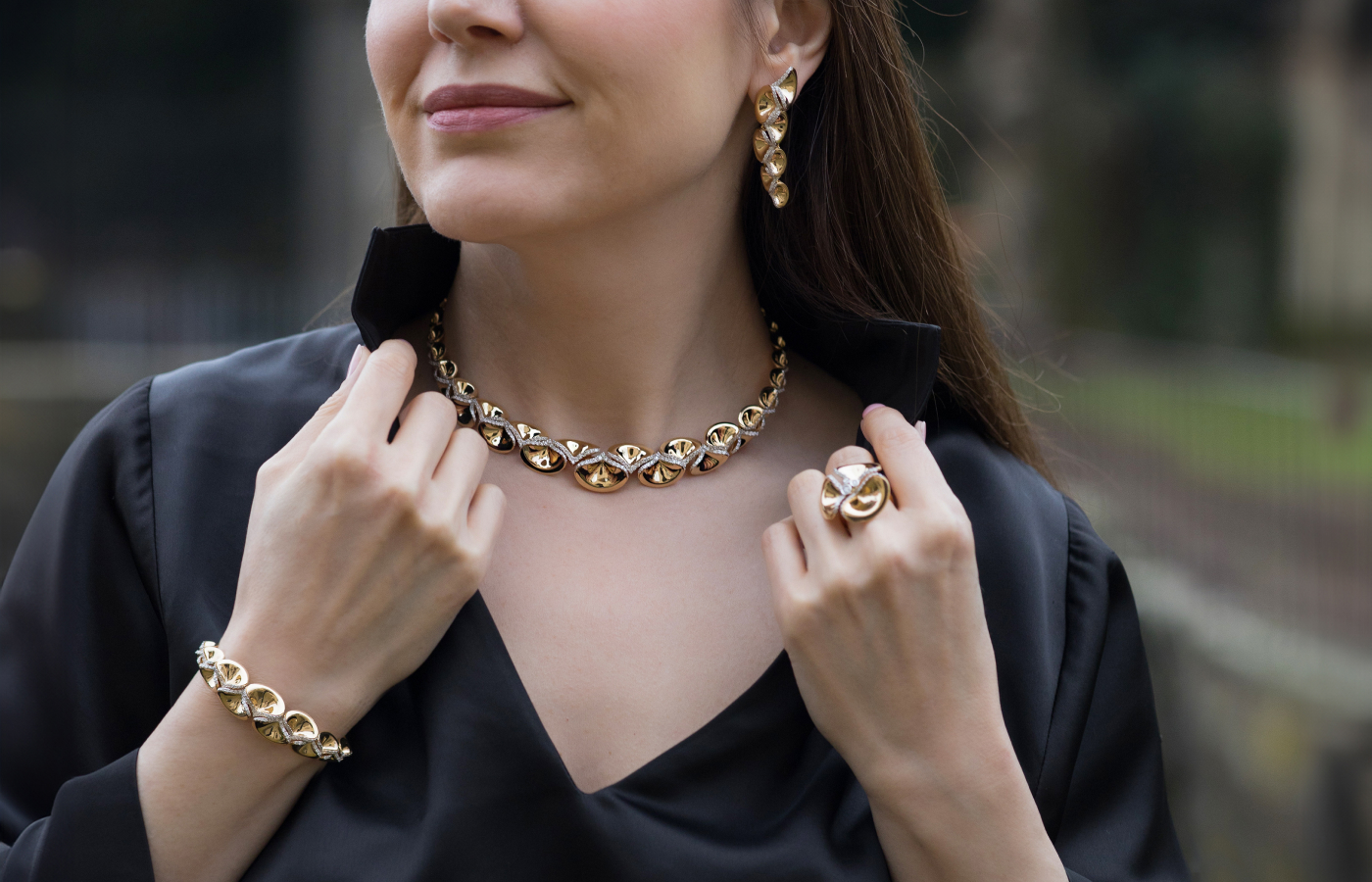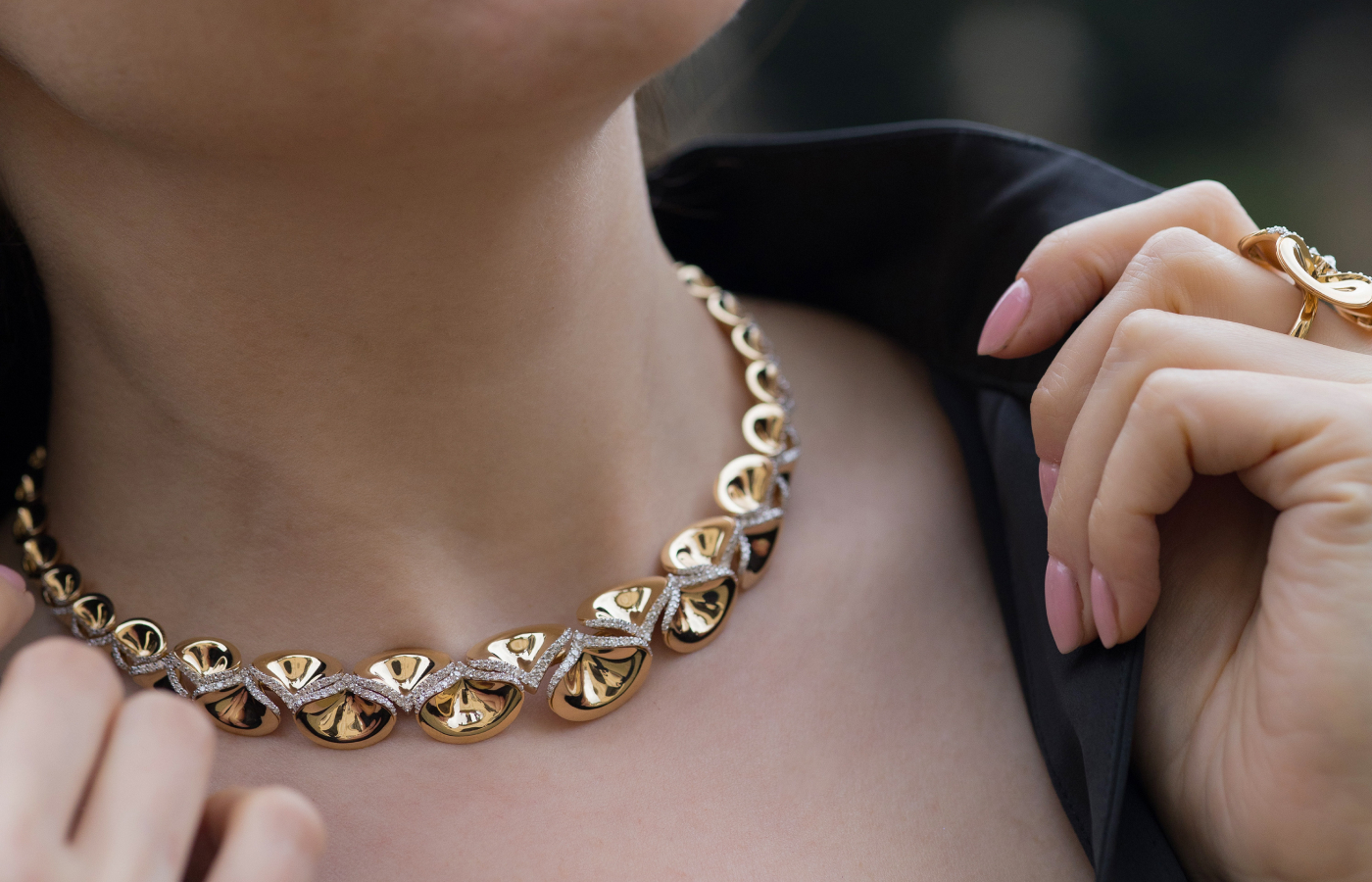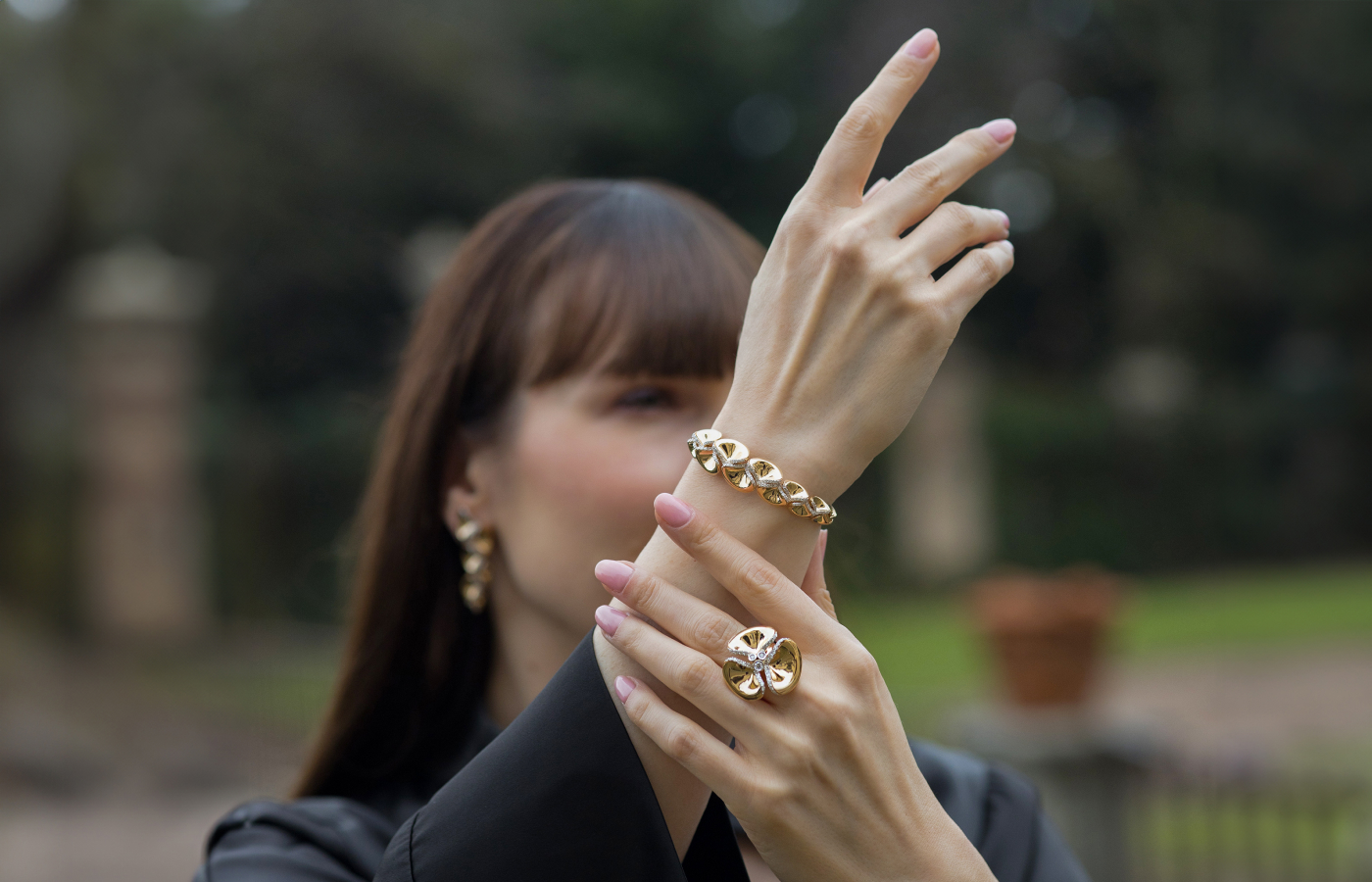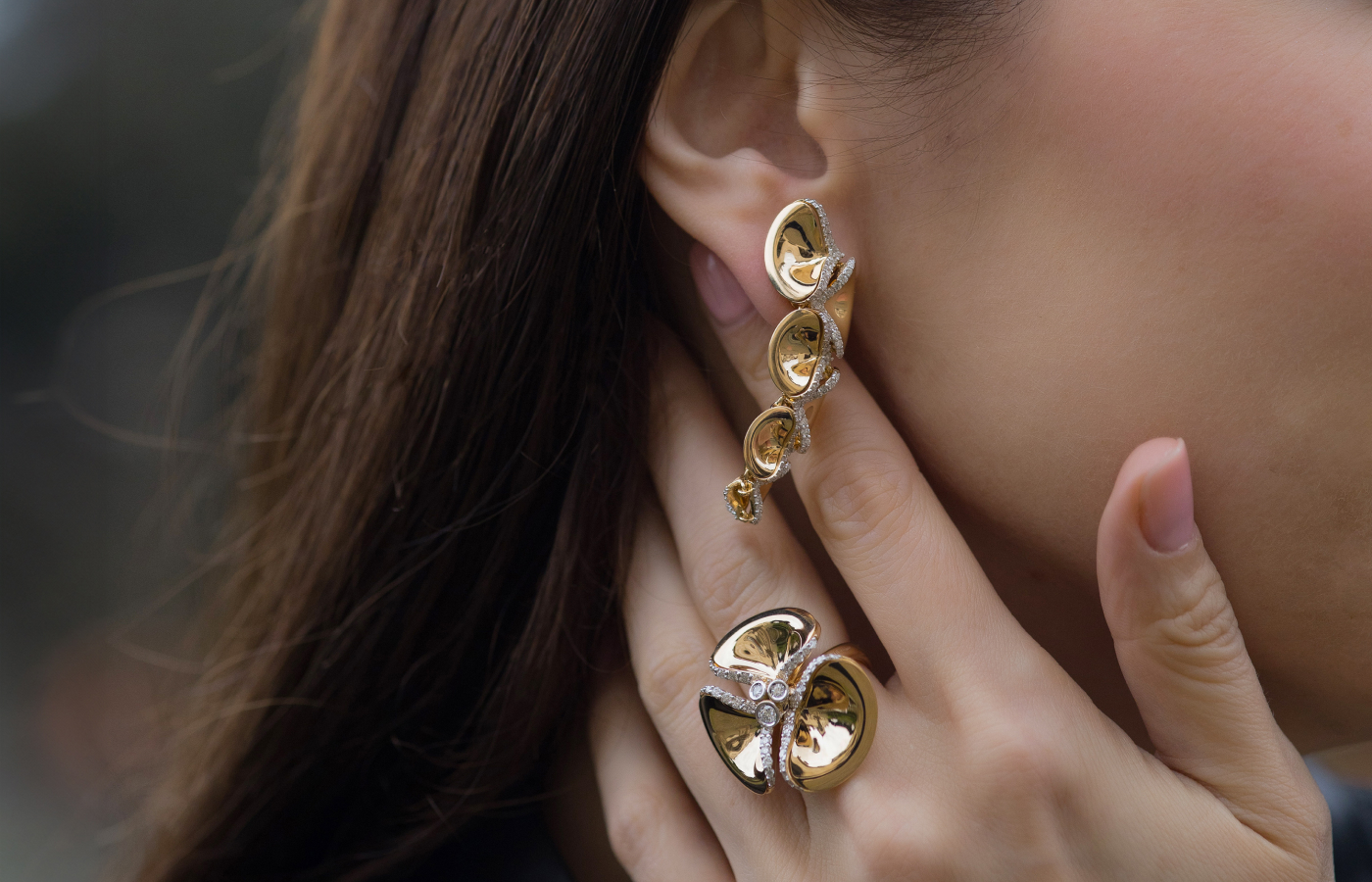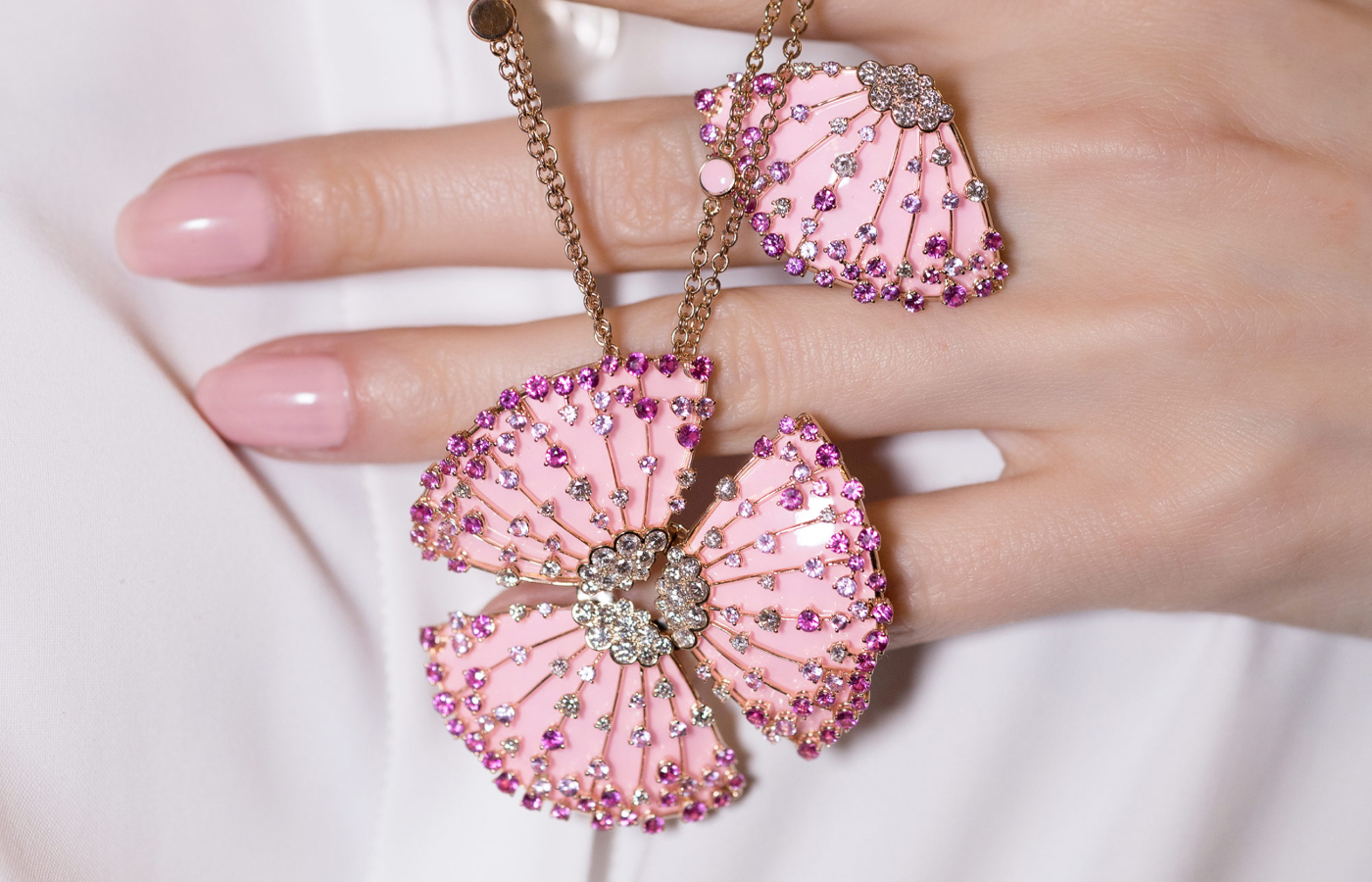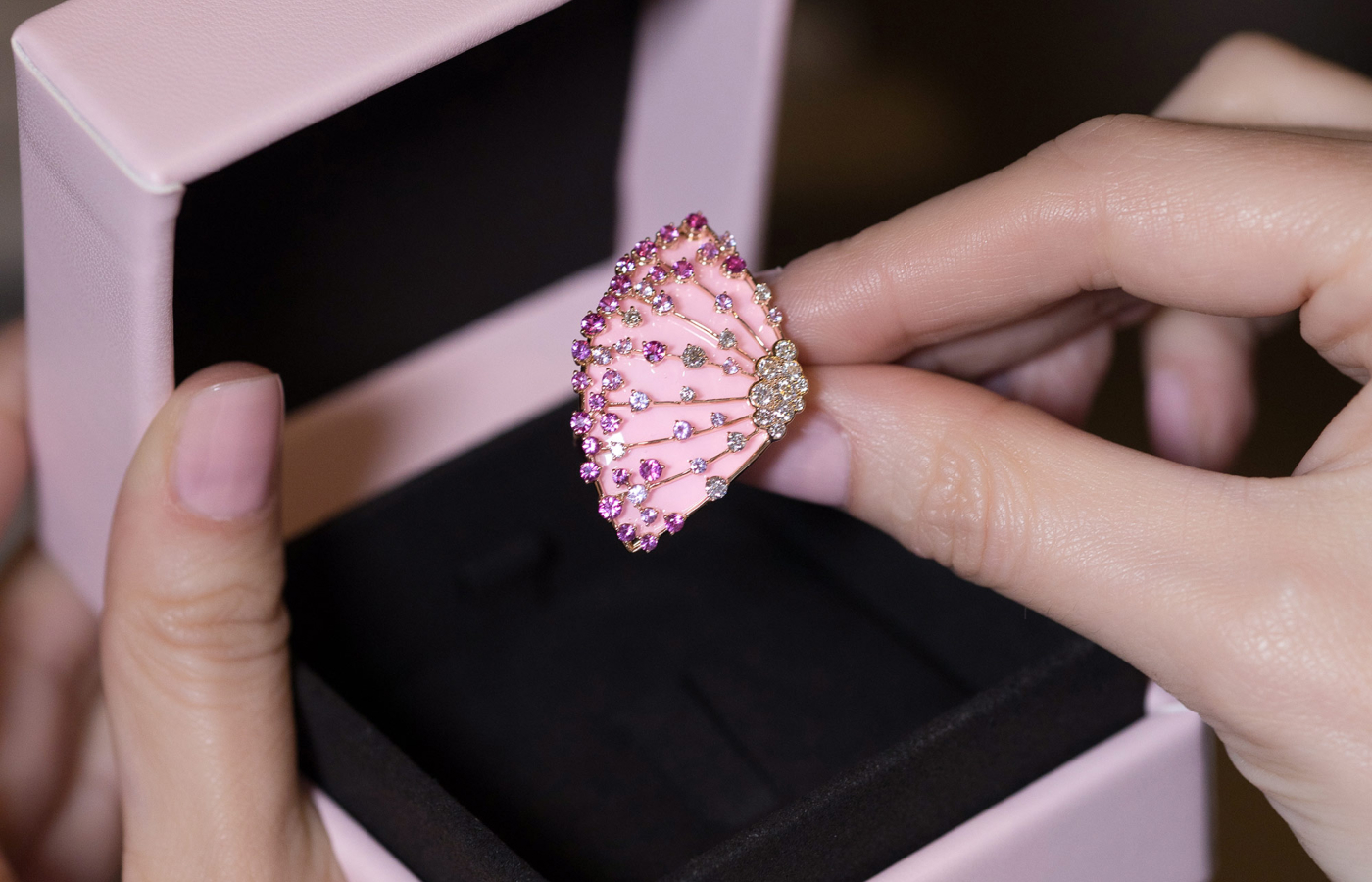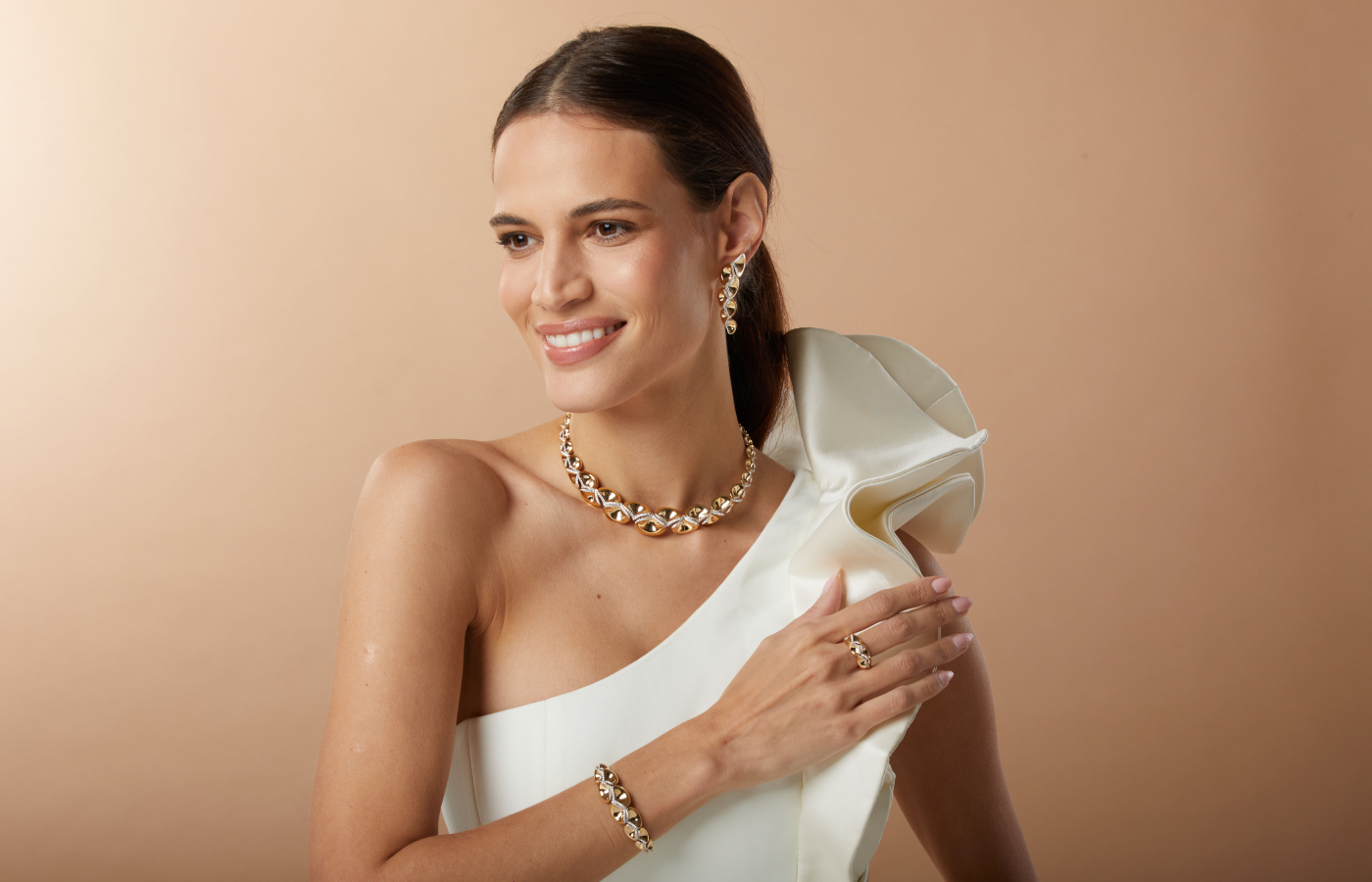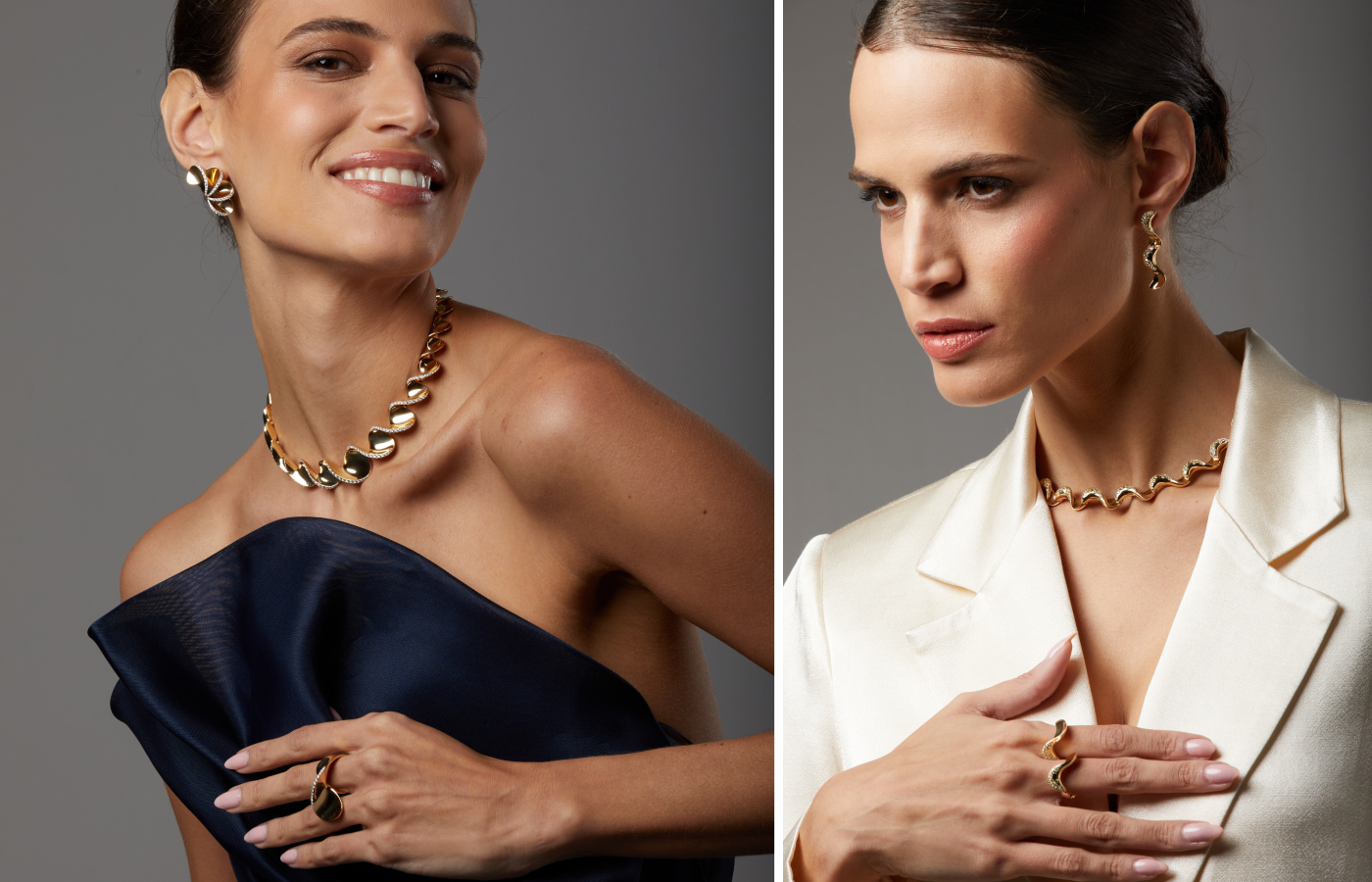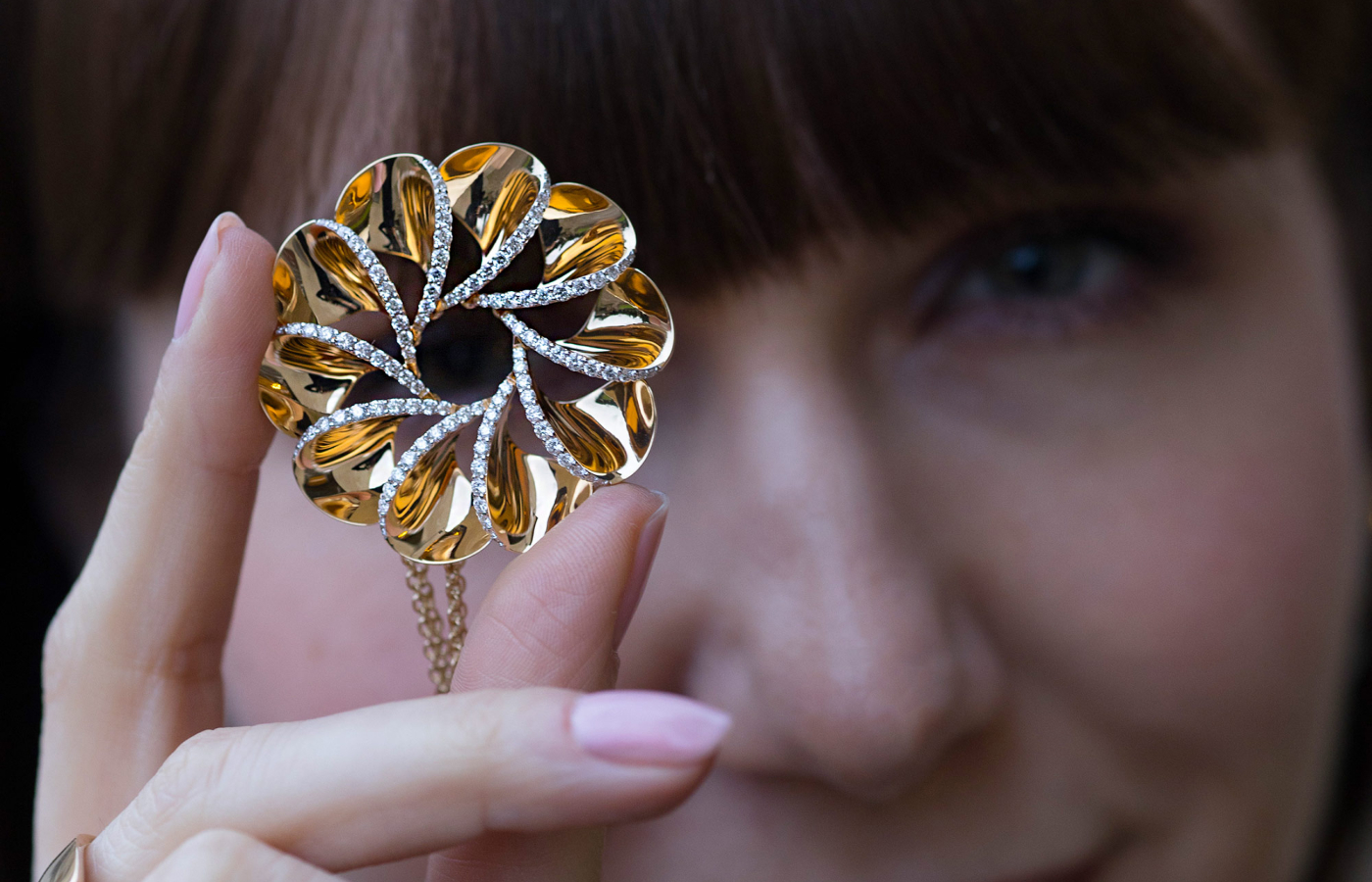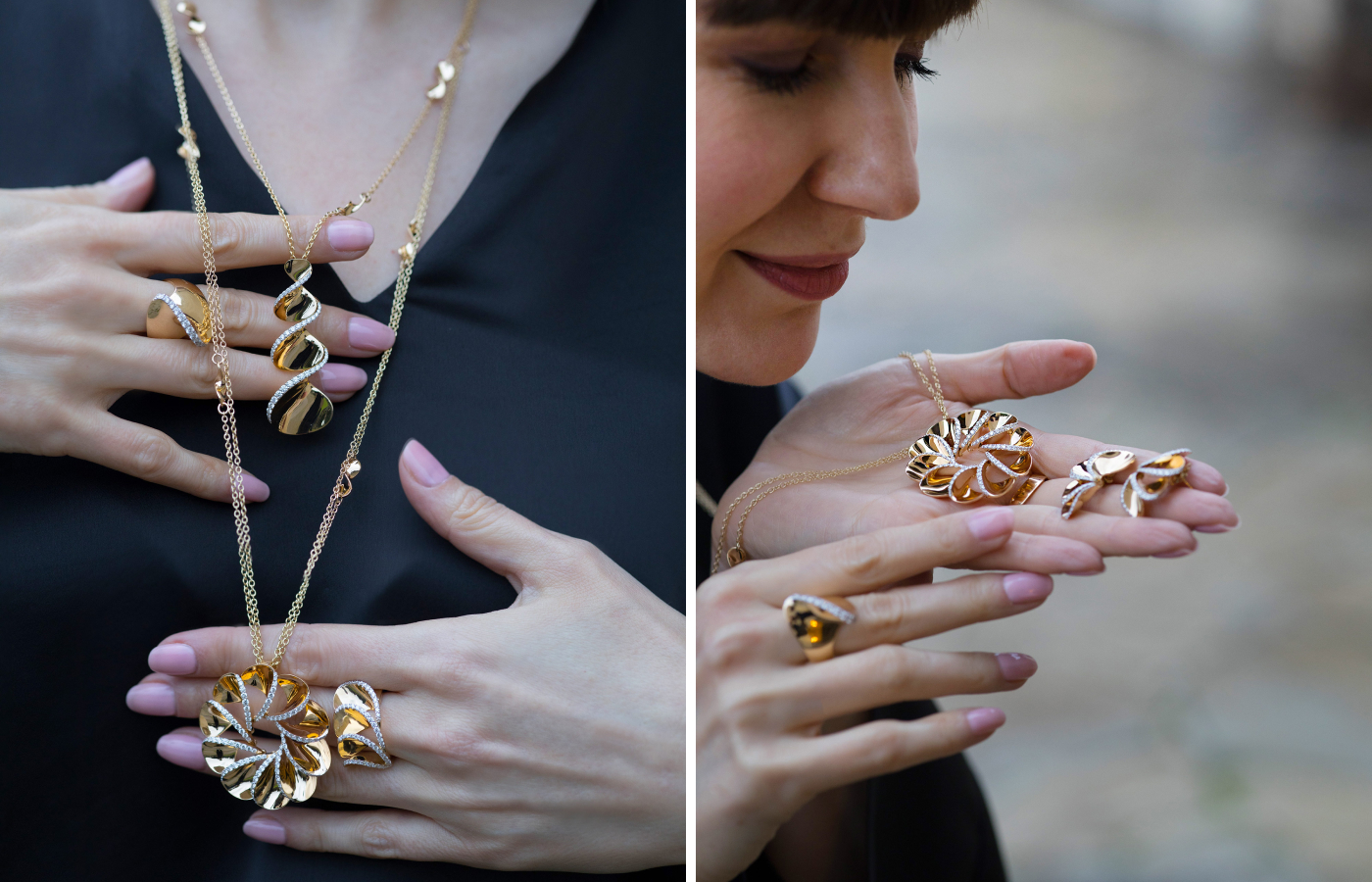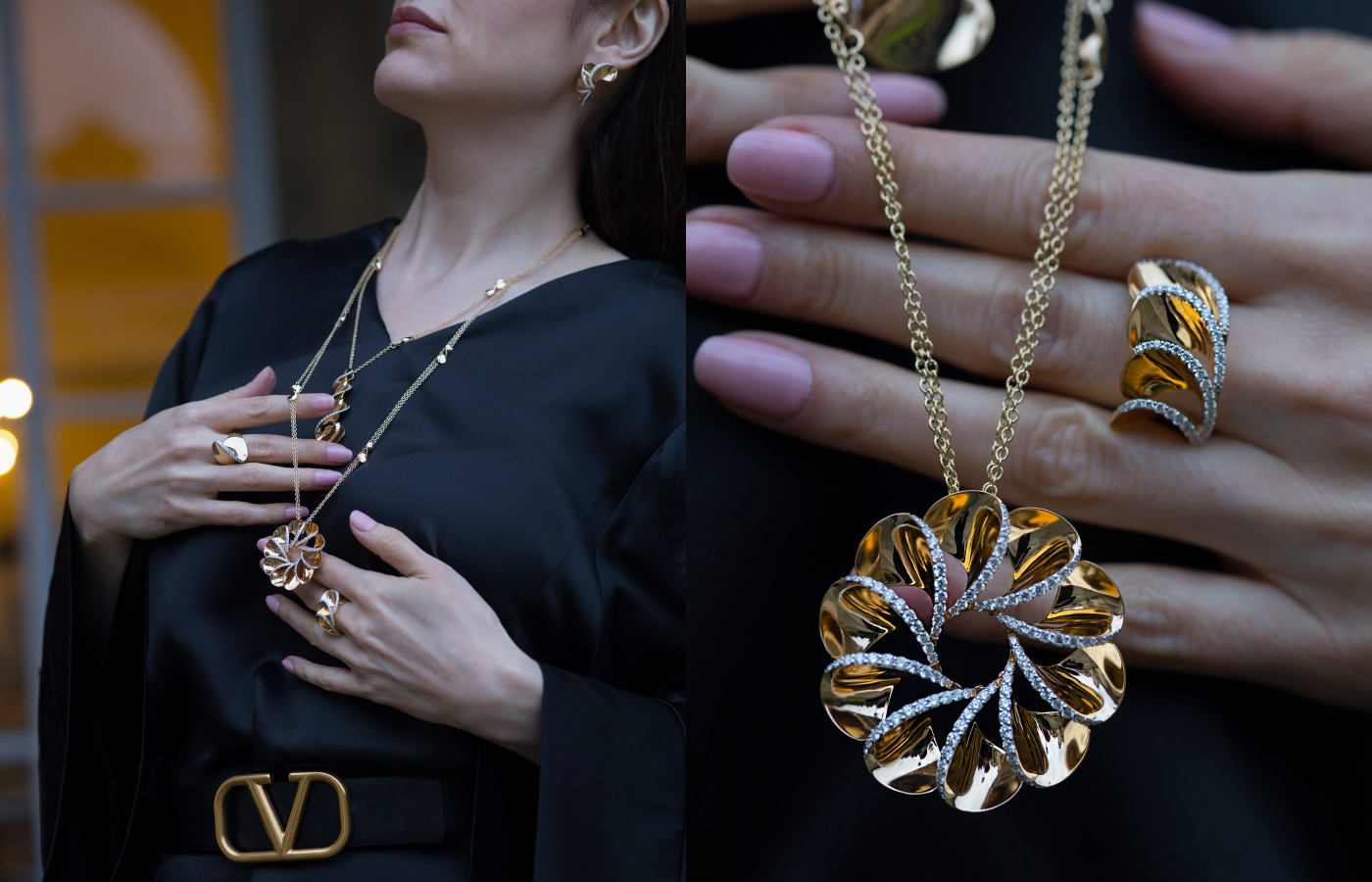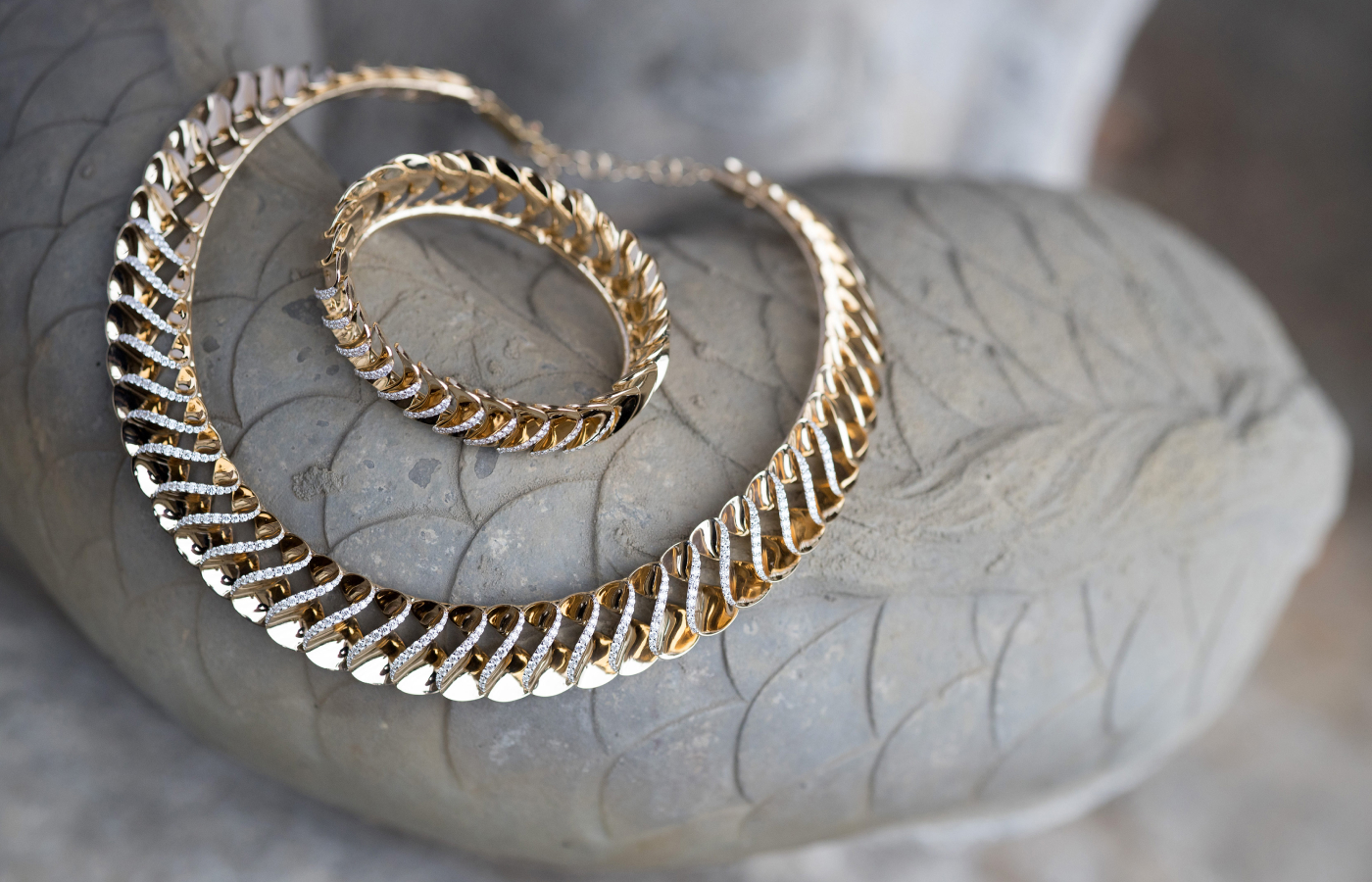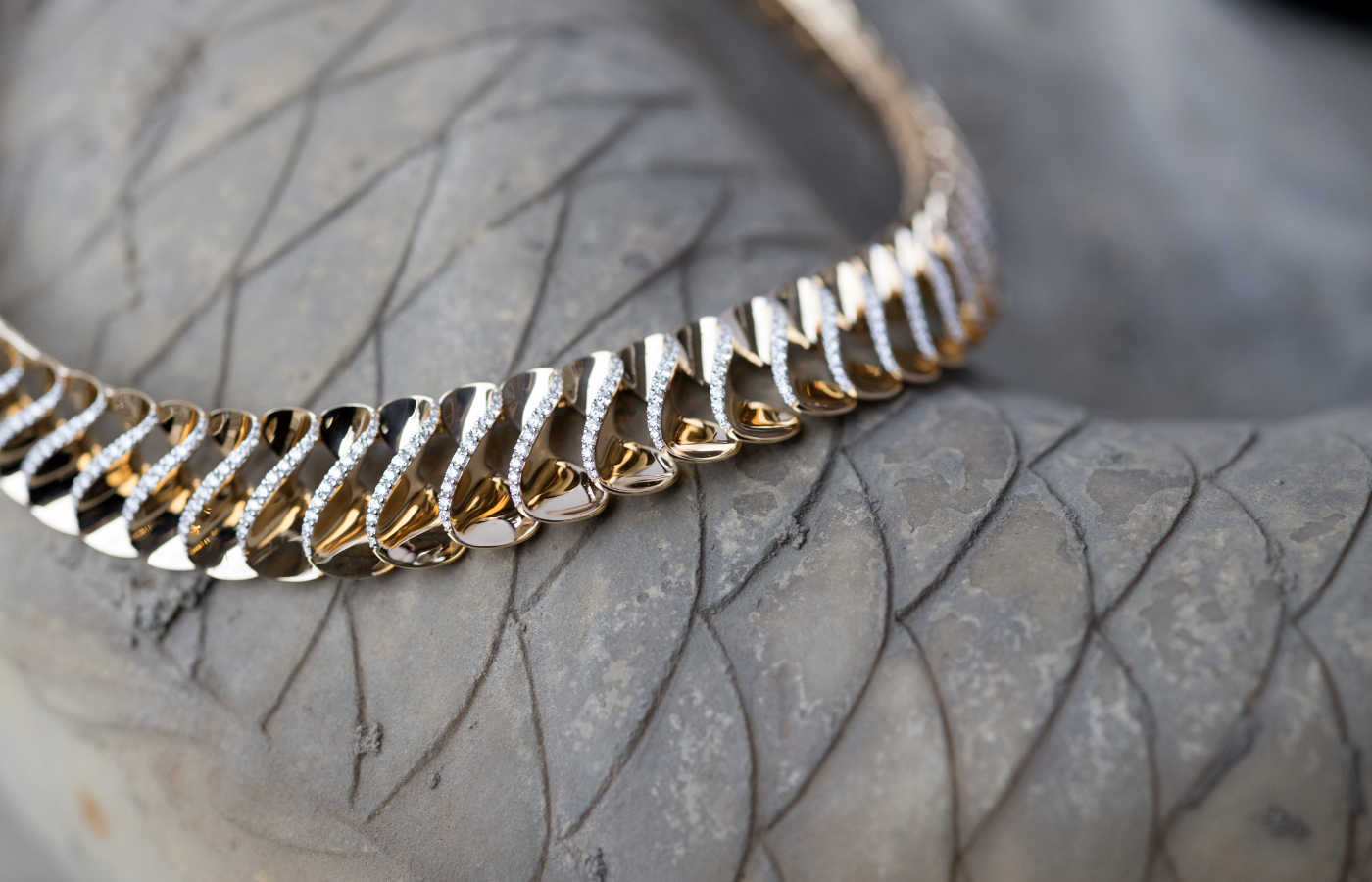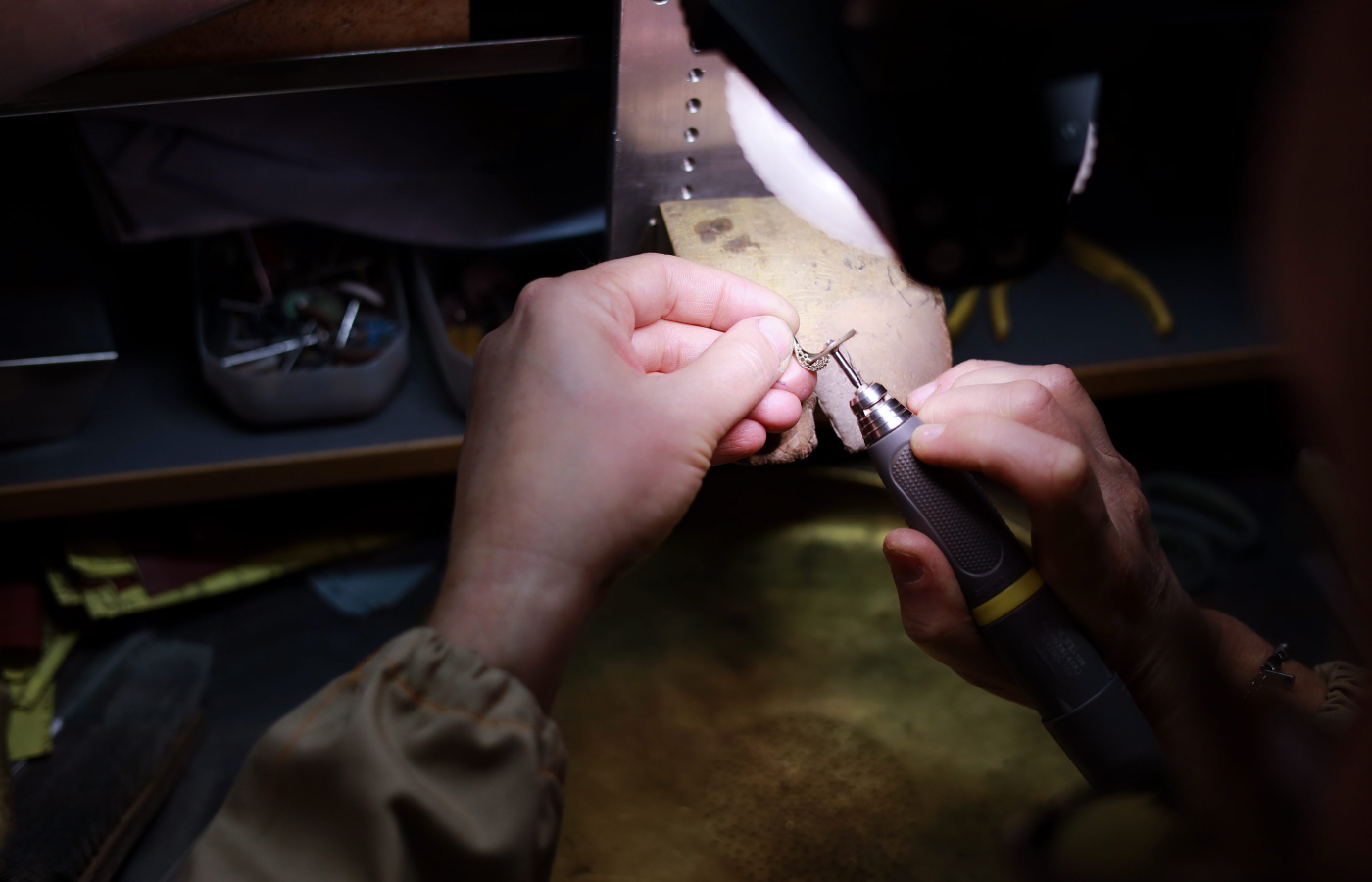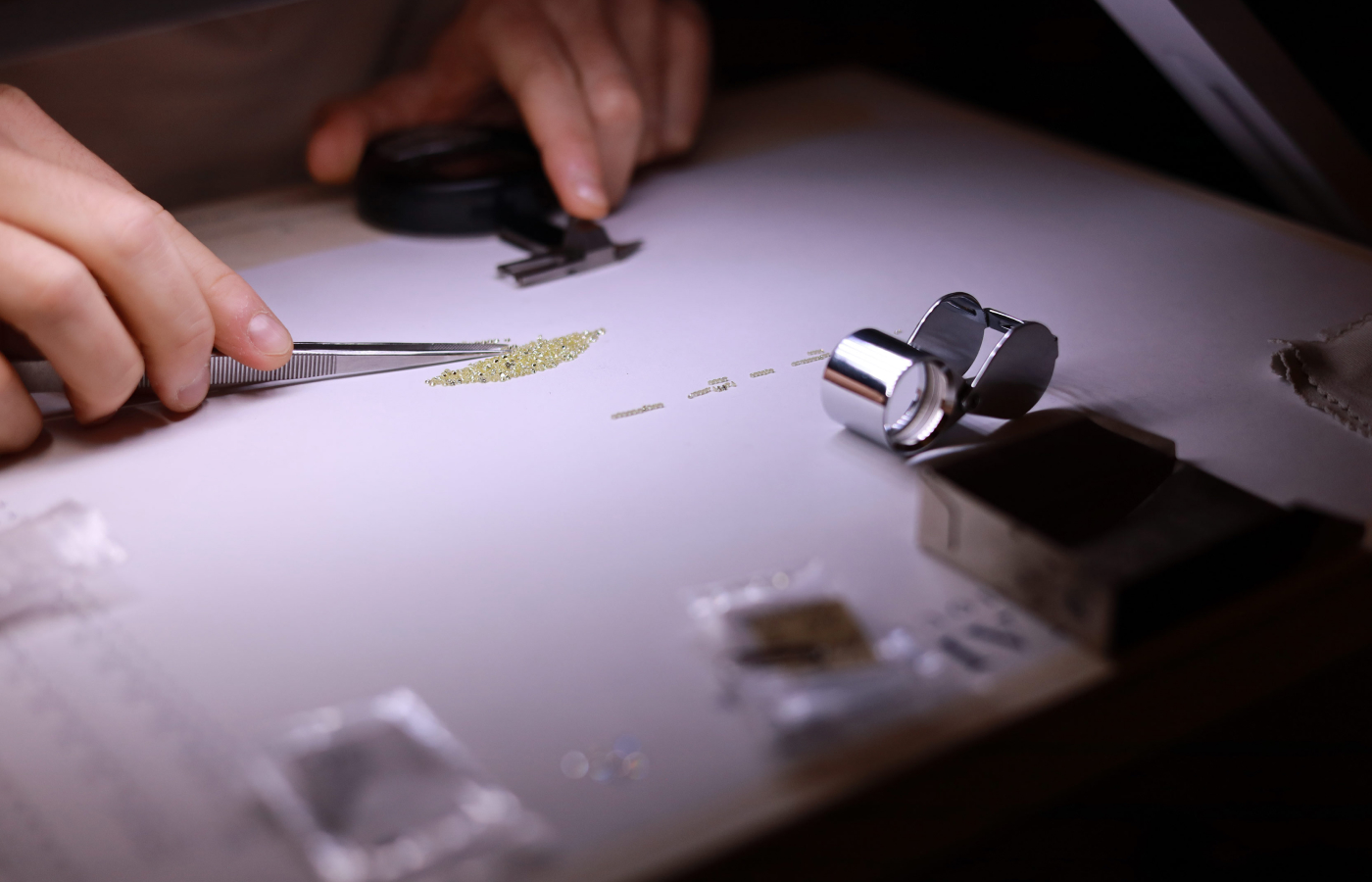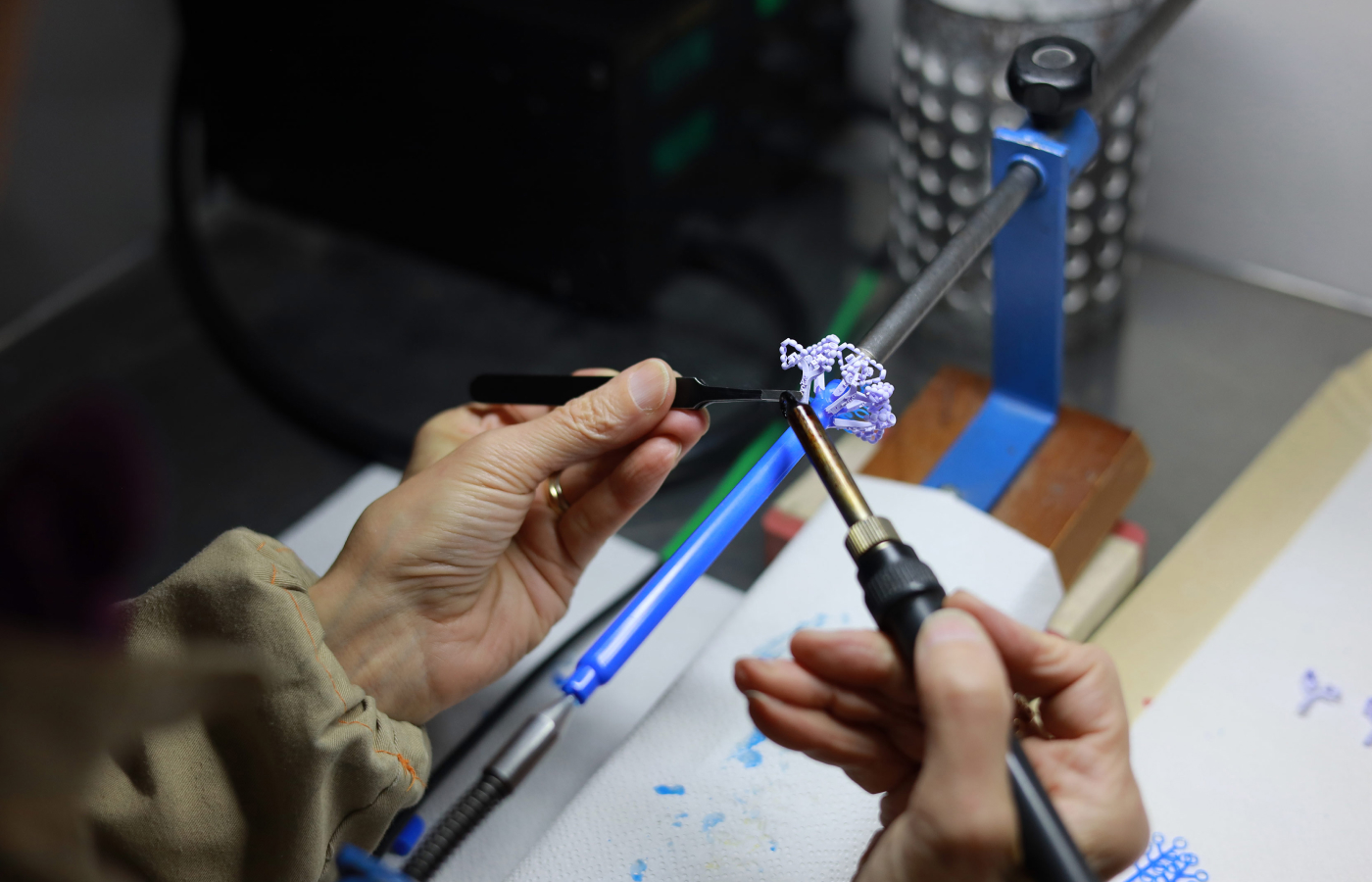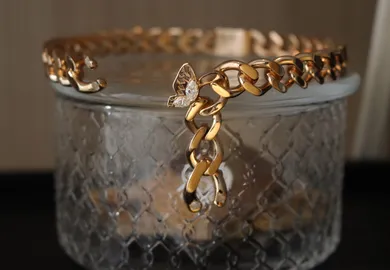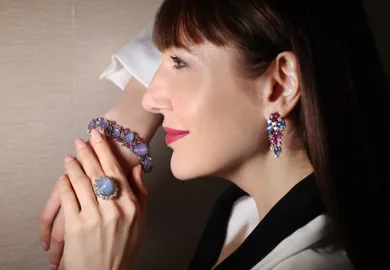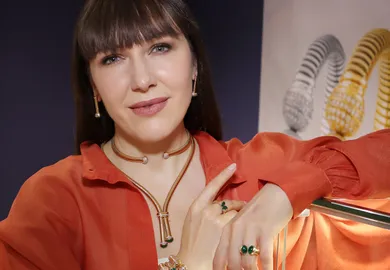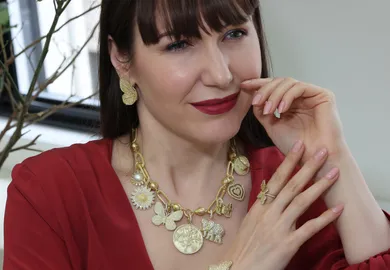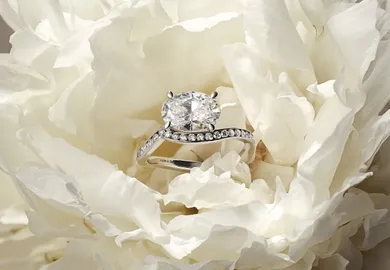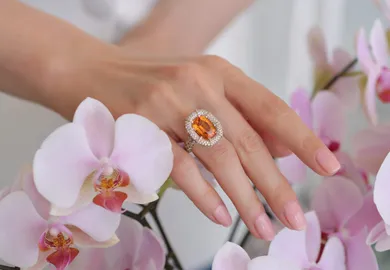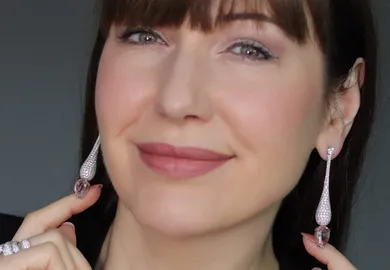
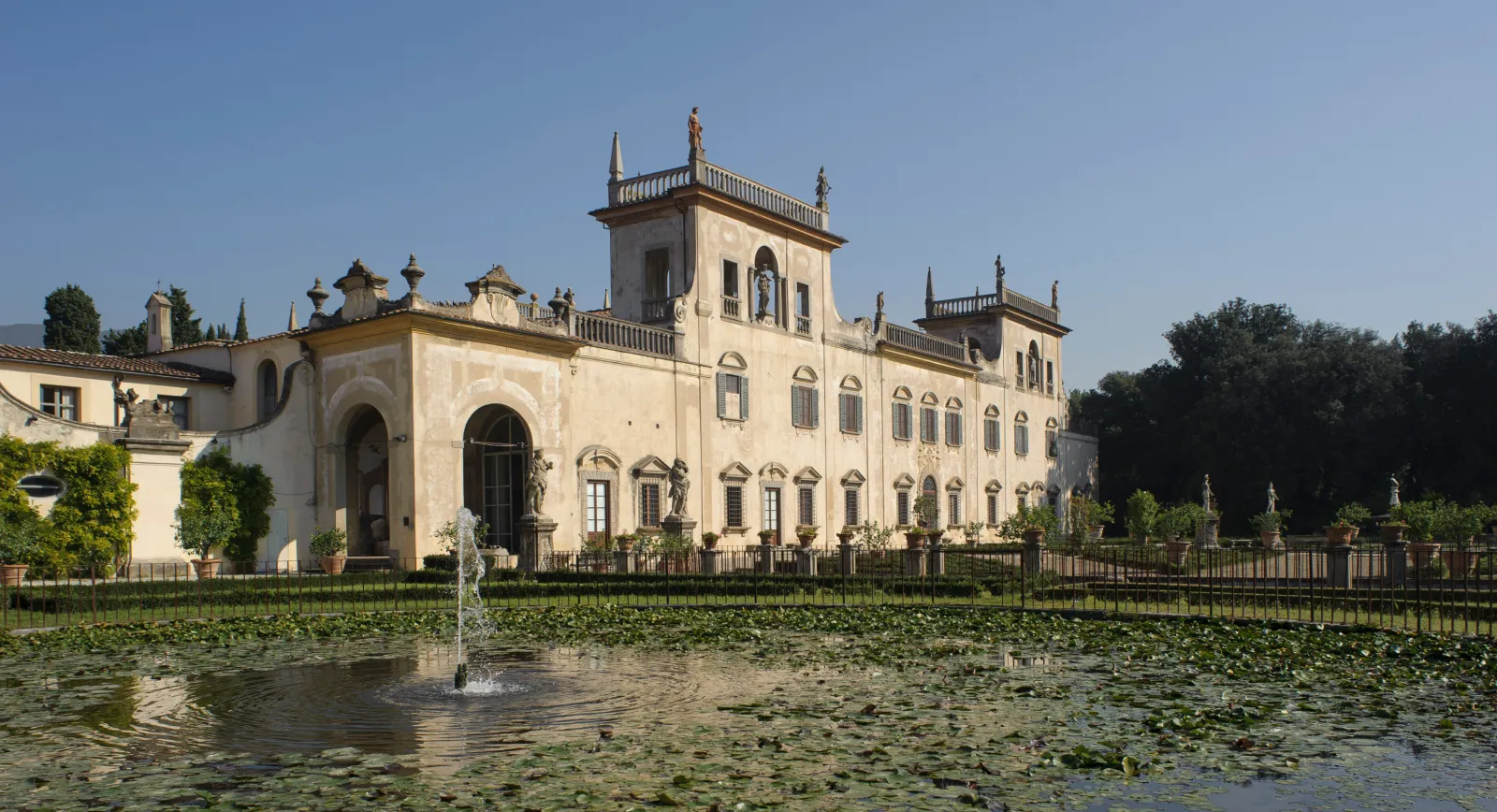
A Handmade Tale: Visiting the Home of FerriFirenze in Florence
The art of handmaking jewellery piece by piece, skill upon skill, is often talked about but so rarely seen these days. Craftsmanship typically happens behind closed doors, which means you have to be invited in to see different processes like wax carving, diamond sorting, gemstone setting and polishing in action. On a recent trip to Florence, I visited the historic villa in which FerriFirenze is based to discover the traditional and contemporary handmaking skills that fill its 16th-century halls. I can think of no better inspiration for beautiful Italian gold jewels…
Even if Villa Corsi Salviati wasn’t the base of Italian fine jewellery brand FerriFirenze, it would still be a wonderful place to visit. It’s a treasure of the Tuscan countryside set in the land north of Florence with shuttered windows against stony walls, manicured gardens, statues, fountains and painted frescoes. The residence is open to guests year-round by appointment only, and VIP clients are given private access to the gardens, an art tour, a behind-the-scenes look at the atelier and exclusive collection viewings, plus a garden lunch. When I visited earlier this year, it wasn’t hard to decipher why the brand’s originator and founder, Ilaria Furlotti and factory master, Giulio Ferrari, believed in this beautiful place and wished for it to be the creative (and perhaps spiritual) hub of their company. Even the ceiling covered in frescos in the room dedicated to CAD design was enough to spark a myriad of creative ideas in me!
The purpose of my visit was to live and breathe the FerriFirenze ethos that everything, from idea to finished jewel, is handmade in Italy by specialists in their respective skill sets. To be guided around each of the brand’s four main departments was a special experience. I was reminded of all the things I admire most about Italian jewellery: the passion, the meticulousness, and the focus on comfort and wearability. And even though FerriFirenze was only founded in 2011, its 16th-century home is like a homage to all the goldsmiths that have come before.
True ‘Made in Italy’ Jewels
Giulia Callegari, the daughter of Ilaria Furlotti and present-day owner of FerriFirenze, once told me that “to create beauty, we must live in beauty”. As I walked around the busy working rooms in which FerriFirenze jewels are made, I kept repeating this phrase in my head. It’s true the brand isn’t just ‘Made in Italy’; it’s born in Italy, designed in Italy and even dreamed and imagined in Italy! Fittingly, Villa Corsi Salviati is a snapshot of Italian history, starting life as a farm with trees for cultivating fruit and oils. Throughout the grounds, sculptures tell the stories of people who have come before, notably a lady with a basket to represent the farmers who worked the land. As the 16th-century owners – the Corsi Salviati family – advanced into the aristocracy, they embraced plants, music, art, sculpture and architecture, making changes to the villa that would continue across four centuries. The result of all this evolution is like a living museum, which now hums with the movement of goldsmiths, CAD technicians, diamond setters, and designers. Today, FerriFirenze contributes to the restoration and maintenance of the villa as its present-day custodian, giving it purpose.
FerriFirenze Inspirations
The brand’s designs are inspired by the surroundings, including new collections for 2024 – Ninfea, Bamboo and Elica. The Ninfea collection is named for the English water lily that floats in the villa’s large fountain, incorporating pieces in 18k gold and white or champagne diamonds with black, white, or purple-hued enamel. In contrast, the Bamboo collection finds its roots in the history of the villa and the passionate botanist who owned the estate in the 1700s. He famously installed a unique plant for the region – a coconut palm – and set about creating a botanical encyclopaedia with seeds from all over the world, including Asia, which is where the bamboo inspiration draws from. The collection is crafted in twisted lengths of perfectly polished gold that are dusted with diamonds for a subtle sparkle.
Tuscan Influence
Even throughout the brand’s existing collections, the influence of its Tuscan base peek through. The Spettinato collection, for example, which has new designs for 2024 alongside the Vito, Plissé and Bubbles ranges, captures the delicately undulating petals that surround the villa. It’s all about the simple pleasures we can find in nature, with rings, earrings, necklaces and bracelets crafted with individual petals of gold that appear to be captured on a breeze, wrapping around the wrist or cascading from the ears. As well as nature, there’s art around every corner at the Villa Corsi Salviati, including 18 nature-inspired sculptures by Girolamo Ticciati (1676–1744) and colourful hand-painted frescoes throughout the atelier. At one point in its history, the Marquis Bardo Corsi transformed the villa into a library of plant life, and we can still see the influence of flowers (especially the sunflower) in the FerriFirenze Solegira collection, among others.
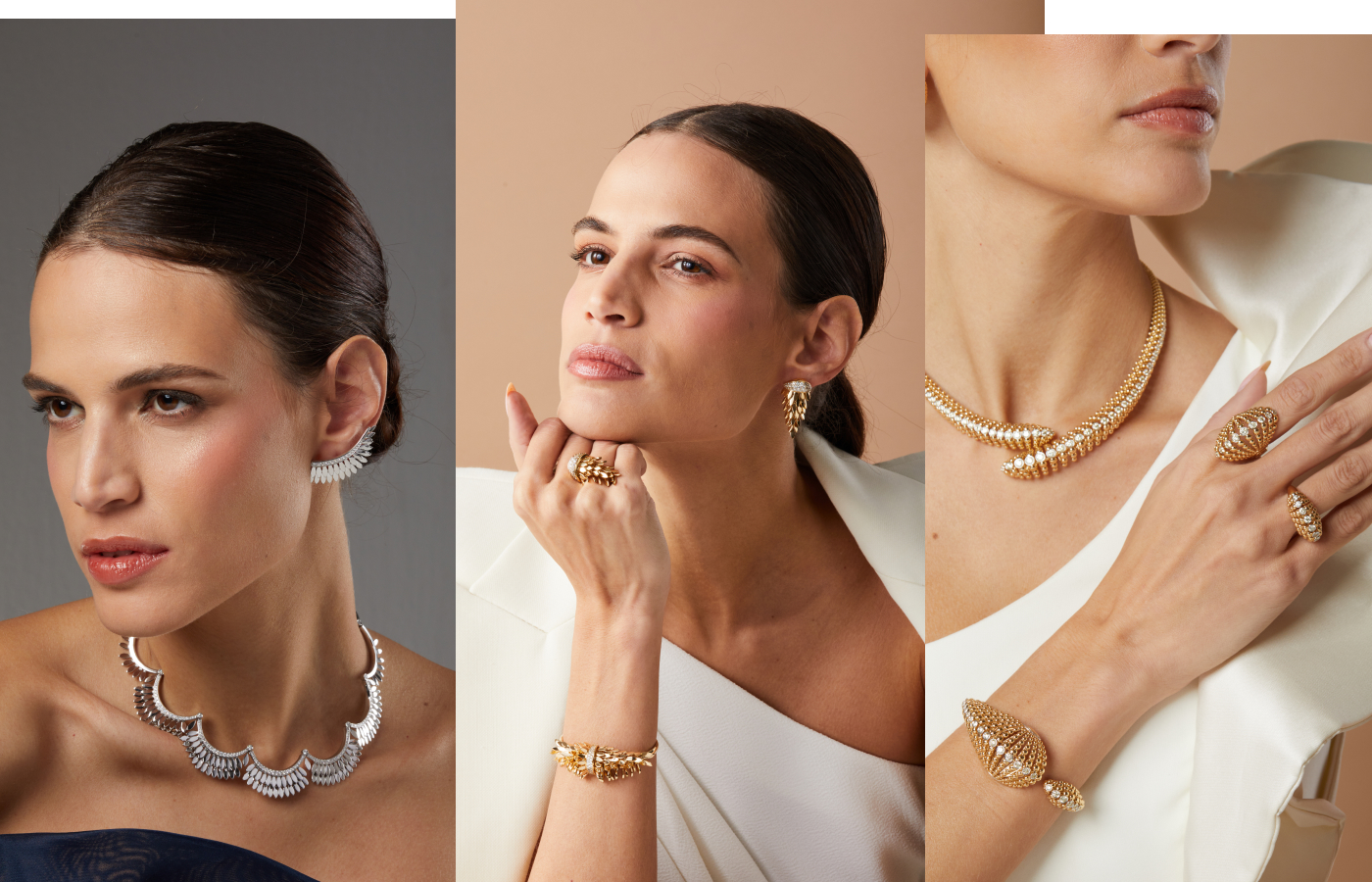
New FerriFirenze fine jewellery creations from the Spettinato collection (left) in 18k white gold, the Spettinato collection in 18k yellow gold and champagne diamonds (centre) and the Bubbles collection, also with champagne diamonds
FerriFirenze Craftsmanship
During my visit, it was hard not to get swept up in the history and focus on the handmade craftsmanship happening in the repurposed rooms. The attention to detail is what I always notice, especially in the second skin feel of Italian jewels that are so focused on comfort, shape and placement on the body. Finding this level of detail is a process, however, that starts with a prototype. FerriFirenze creates these directly in gold, not silver or base metals, to discern if a design is worthy of reproducing – almost like a creative trial period before it goes into production.
When we’re told a jewel has taken 20 hours to complete, this typically only encompasses time at the bench. My visit to the villa was a useful reminder that these hours stretch far longer when considering the drawing, 3D modelling, wax carving, and sample stages. A jewel that appears relatively unassuming may have taken weeks to perfect! Of the four main departments – design and CAD, wax modelling, diamond sorting, and jewellery making – I was most mesmerised by the hushed darkness of the ‘diamond room’.
The Diamond Room
“We have to work in a part of the room that is very dark because we need the real reflection of light from the diamond and to see exactly the colour of the diamond,” Giulio Ferrari told me, as the expert diamond sorter, Filippo, quickly picked through small stones. Firstly, it’s hard to convey how fast and accurate his hands were. I could not discern a difference in size between the stones on his bench, and yet, he could easily. I was witnessing an instinct for diamonds in action! Imagine there are diamonds of 1.75mm and 1.80mm in front of you – could you by hand separate them, one by one, for a whole day? For a jewel with evenly sized diamonds, it may take an hour to choose the diamonds, Giulio adds, but for a piece with graduating stones, it could take four or five hours for a single creation.
In the weeks since my visit to Villa Corsi Salviati, I’ve been reminded that patience is a virtue. To produce pieces with technical precision and meticulous finishes is as much about patience as it is about raw materials, hand-making skills and hours of hard work. However, if I was asked to be patient anywhere – to trust the process anywhere – I would be happy to do that in the Tuscan countryside, in a 16th-century villa, surrounded by gardens, sunshine and art. Wouldn’t that be nice!
Discover more about FerriFirenze via its website, Instagram or by contacting the brand on WhatsApp.

WORDS
Sarah Jordan has specialised in content writing, editing and branded storytelling for a range of businesses, including De Beers Jewellery, Sotheby’s, the Natural Diamond Council and Gem-A. She is also the founder of her own specialist copywriting business, The William Agency.
